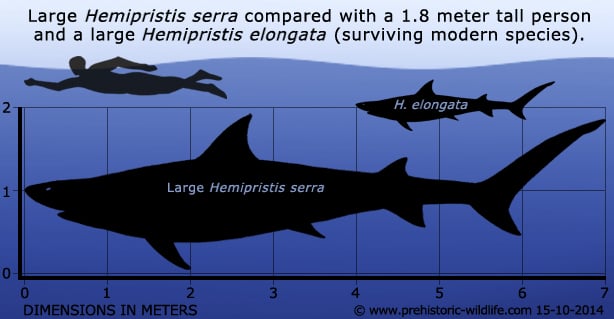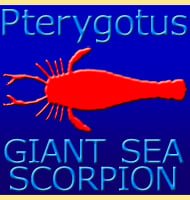In Depth
Hemipristis is a genus of weasel shark which includes the extinct species H. serra, H. curvatus and H. wyattdurhami, although the most popular species by far is H. serra. The last surviving member of the Hemipristis genus is H. elongata, better known as the Snaggletooth shark. H. serra seems to have been a particularly large species of Hemipristis, with the size of the teeth and jaw reconstructions of H. serra being roughly three times larger than the modern species H. elongata. Ergo, if the bite of a large H. serra was three times larger than a big H. elongata, then it is within the realms of possibility that a large H. serra would also be three times as long as a large H. elongata. With a large H. elongata measuring about two hundred and forty centimetres long, this would make a large H. serra a little over seven meters long, bigger than the largest recorded great white shark. In all seriousness though this is not that much a stretch of the imagination, as H. serra was swimming in the oceans at the same time as even bigger sharks such as C. angustidens, C. chubutensis, and of course the mighty C. megalodon! Hemipristis sharks are noted for having slim pointed teeth in their lower jaws and having broader triangular teeth in the upper jaws. Although this may seem curious it is actually a simple arrangement that allows the lower teeth to pierce the flesh of prey and holding it in place while the upper teeth saw through with their serrations. This allows Hemipristis to remove bite sized chunks from the bodies of large prey. The large size of H. serra meant that it could prey upon larger animals, a statement that is corroborated by the presence of Hemipristis tooth marks upon the bones of mammalian sirenians such as manatees.
Hemipristis serra teeth are very popular collectors’ items on the fossil market due to their colouration which makes them quite unique when compared with the teeth of other shark species.
Further Reading
– Quantifying a possible Miocene Phyletic change in Hemipristis (chondrichthyes) teeth. – Palaeontologia Electronica. – Richard E. Chandler, Karen E. Chiswell, and Gary D. Faulkner – 2006.











